
Table of Contents
The Timeless Appeal of Classic Football Shirts
What makes a football shirt classic? Is it the design, the team’s success while wearing it, or the players who donned it? The appeal of classic football shirts lies in a combination of these factors. They evoke nostalgia, represent pivotal moments in football history, and are a testament to the evolving fashion in sports.
Classic football shirts aren’t just pieces of sportswear; they’re symbols of history, passion, and timeless design. From the iconic red of Manchester United’s treble-winning kit to the elegant stripes of AC Milan’s European triumphs, each shirt tells a story. In this article, we’ll explore the allure of these historical garments and highlight 10 classic football shirts that have left an indelible mark on the sport’s history.
Iconic Shirts: A Journey Through History
1. The 1966 England World Cup Shirt

England’s 1966 World Cup victory is etched in football lore, and so is the red shirt worn during the final. Simple in design yet powerful in its symbolism, this shirt represents England’s finest football hour.
2. AC Milan’s 1988-89 European Triumph Kit
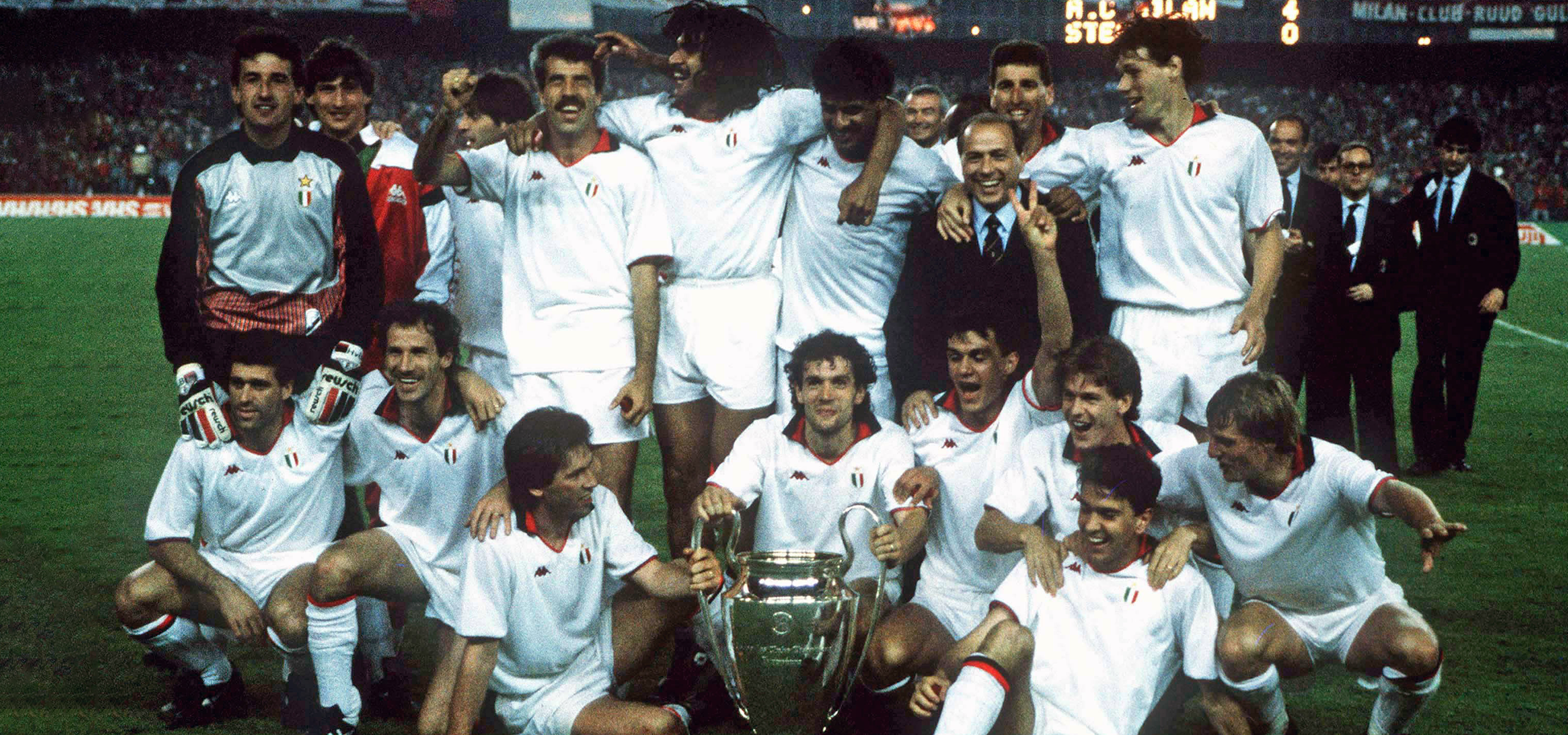
The Rossoneri’s dominance in Europe was perfectly encapsulated by their stylish, vertically striped kit. It symbolizes a period of European conquest and footballing excellence.
Explore more about Football Kit AC Milan
https://footballfansgo.com/6-football-kits-ac-milan/
3. Brazil’s 1970 World Cup Glory Shirt
The bright yellow kit of Brazil’s 1970 World Cup team is forever linked with the beautiful game. Worn by legends like Pelé, this shirt is synonymous with flair, joy, and the samba style of football that captivated the world. It’s a symbol of a team that was more than just victorious—they were artists on the pitch.
4. Barcelona’s Dream Team Era Shirt (1992)
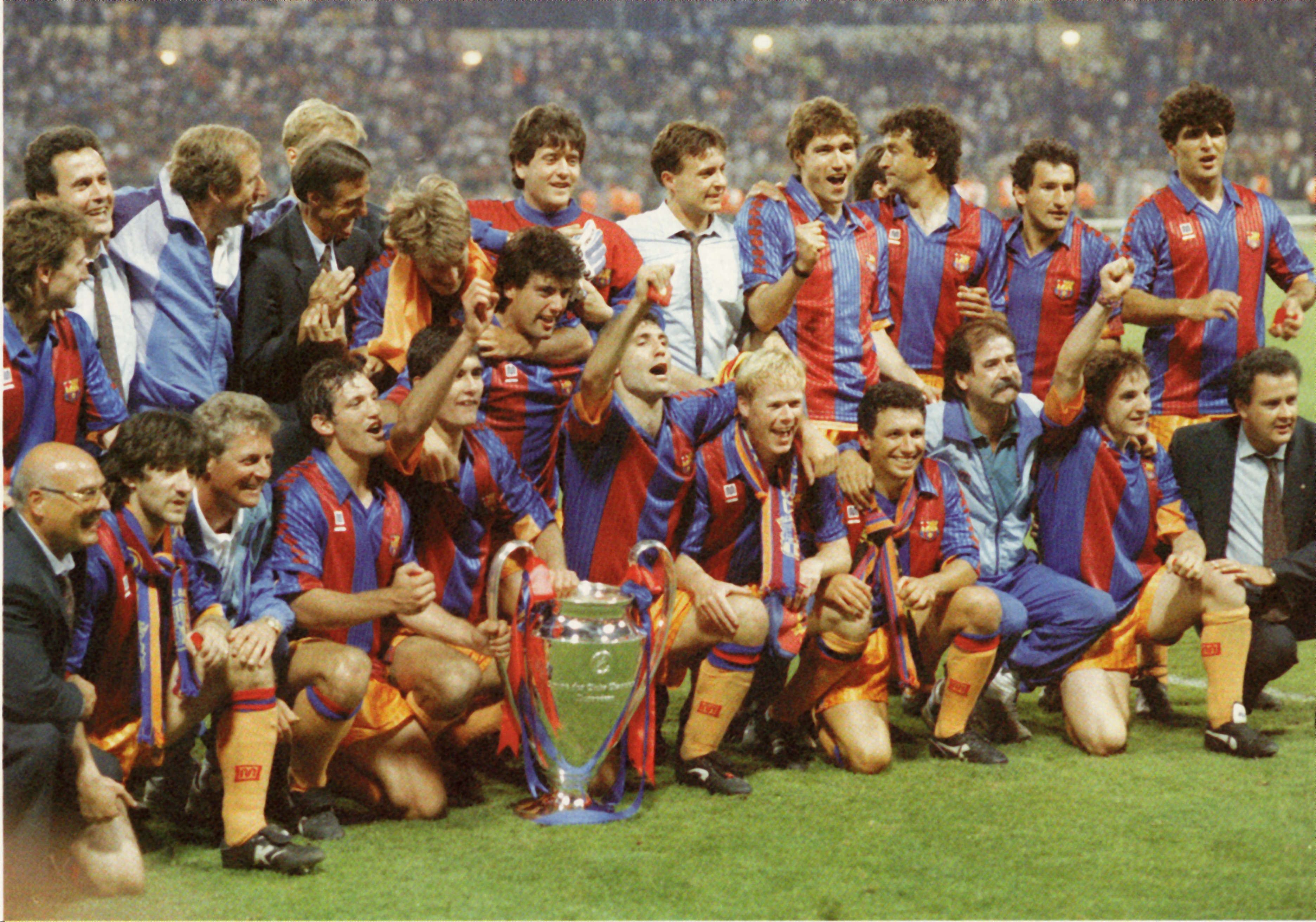
The early ’90s saw Barcelona’s “Dream Team” under Johan Cruyff revolutionize football. The blue and garnet stripes of their kit during this era are iconic, representing a period of stylistic and tactical innovation that has influenced football philosophy for decades.
5. Manchester United’s 1999 Treble-Winning Kit
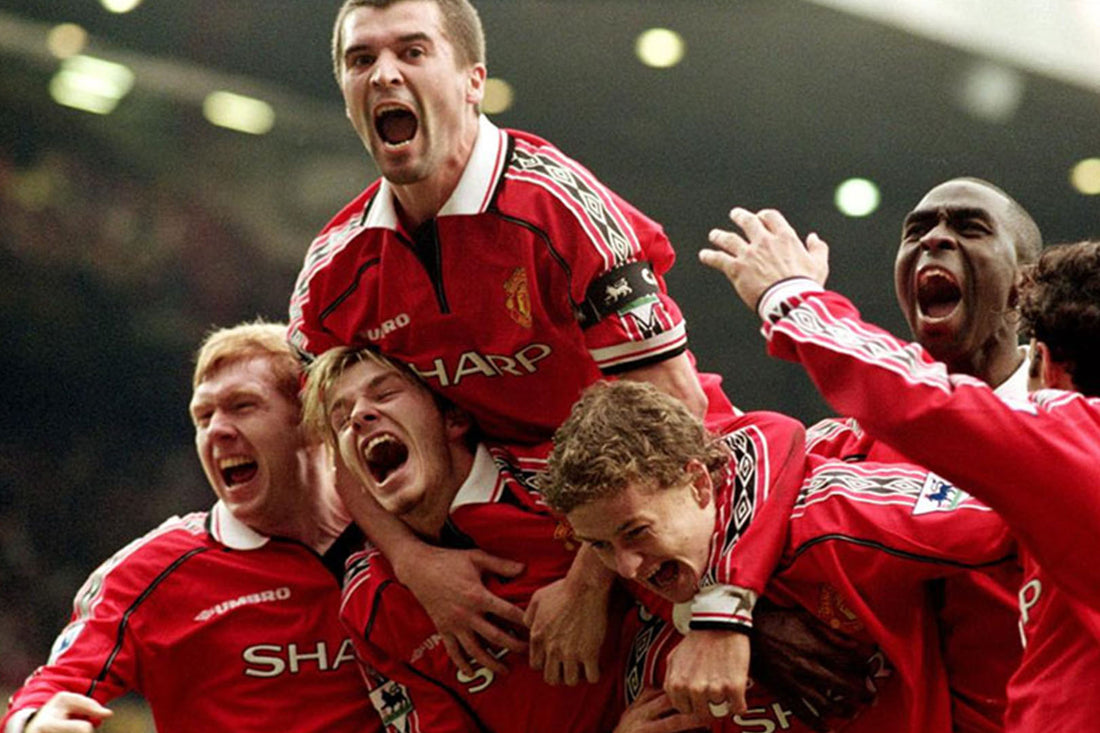
Manchester United’s 1999 treble-winning season is a tale of determination and heroics. The iconic red shirt with its black and white details is etched in the memories of fans, symbolizing one of the greatest achievements in club football history.
6. Argentina’s 1986 World Cup Shirt

Argentina’s victory in the 1986 World Cup is often remembered through the lens of Diego Maradona’s brilliance. The blue and white stripes of their shirt from that tournament are iconic, representing a nation’s pride and the genius of one of football’s greatest players.
7. Liverpool’s 1984 European Cup Winners Kit
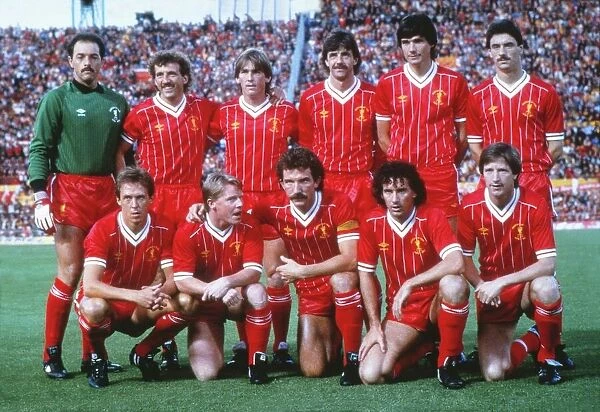
Liverpool’s dominance in Europe during the 1980s is well documented, and their 1984 European Cup victory is a key highlight. The red shirt with its white and yellow trim represents a period of unparalleled success for the club.
8. Ajax’s 1995 Champions League Victory Shirt
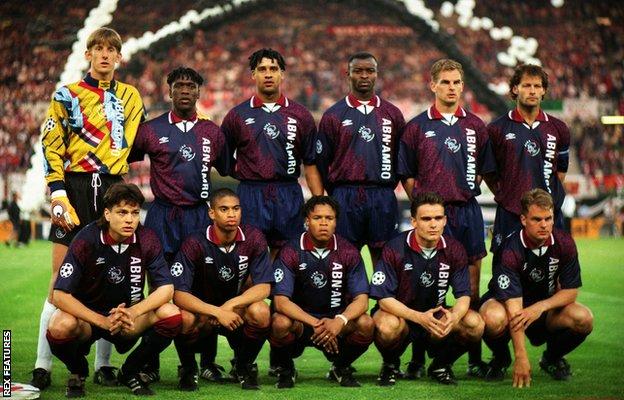
Ajax’s 1995 Champions League triumph, achieved with a team full of homegrown talent, is a testament to their football philosophy. The classic red and white shirt from that season symbolizes purity in football and the success of a youth-driven approach.
9. Real Madrid’s Centenary Shirt (2002)

Celebrating 100 years of a rich footballing history, Real Madrid’s centenary shirt from 2002 is a collector’s item. It signifies not just a century of success but also the evolution of one of the world’s most storied football clubs.
10. Juventus’ Unforgettable 1996 Champions League Kit

Juventus’ black and white stripes are iconic in the football world. Their 1996 Champions League victory in a shirt featuring these bold stripes marked a high point in the club’s history, representing a blend of Italian defensive mastery and attacking flair.
The Cultural Impact of Classic Football Shirts
Classic football shirts transcend the realm of sport. They’re not just memorabilia; they’re pieces of cultural heritage that capture the essence of eras, teams, and legends. Here’s how they’ve left their mark beyond the pitch:
- Fashion Statements: These shirts have often set trends in the fashion world. From high-street styles to designer collaborations, the influence of classic football shirts on everyday fashion is undeniable. Their designs, often reflecting the zeitgeist of their times, become iconic.
- Symbols of Identity: For fans, these shirts are more than just garments; they’re symbols of identity, loyalty, and belonging. They represent personal and communal histories, connecting generations of supporters.
- Collectors’ Items: The rarity and nostalgia associated with classic shirts turn them into coveted collectors’ items. Each shirt, with its unique story and significance, becomes a cherished piece in a fan’s collection.
- Influence on Music and Pop Culture: Classic football shirts have made their way into music videos, movies, and other pop culture mediums, often worn as symbols of street style and retro cool.
- Global Appeal: The appeal of these shirts goes beyond local fanbases. They represent a global language of football, transcending geographical and cultural barriers.
This cultural resonance underscores the enduring legacy of classic football shirts. They’re not just relics of the past but living symbols of football’s rich and diverse history.
Collecting Classic Shirts: A Hobby or an Investment?
The practice of collecting classic football shirts can be both a passionate hobby and a savvy investment. Here’s a look at what drives this fascinating pursuit:
- Passion for the Game: At the heart of shirt collecting is a deep love for football. Collectors often seek shirts that have personal significance, such as those worn by their favorite teams or players during memorable matches.
- Historical Significance: Some collectors are drawn to shirts because of their historical value. These might include kits worn during significant games or those associated with legendary players and landmark achievements.
- Investment Potential: With the growing interest in sports memorabilia, classic football shirts can appreciate in value over time, especially rare editions or those linked to iconic football moments. This potential for financial gain adds an exciting dimension to collecting.
- Community and Connection: Collecting shirts often leads to being part of a community of like-minded enthusiasts. This community aspect can be incredibly rewarding, offering opportunities to connect, trade, and share stories.
- The Thrill of the Hunt: For many collectors, the excitement lies in the hunt – finding that rare, sought-after shirt in pristine condition or discovering an overlooked gem at a bargain price.
However, collectors should be aware of the risks involved, such as the proliferation of counterfeit shirts. Ensuring authenticity is paramount, both for personal satisfaction and for maintaining the value of the collection.
Collecting classic football shirts is a journey that encapsulates the spirit of football, blending nostalgia, passion, and the thrill of the chase. It’s a hobby that celebrates the game’s rich history and connects individuals across the globe.
Authenticity and Replicas: What Collectors Should Know
Understanding the difference between authentic shirts and replicas is crucial for collectors. Here’s what you need to know:
- Authentic vs. Replica: Authentic shirts are the exact jerseys worn by players on the pitch. They’re designed with performance in mind, featuring high-quality materials and construction. Replicas, while similar in design, are fan versions, generally more affordable and less tailored.
- Identifying Authentic Shirts: Authentic shirts often have distinct features like official league patches, player-specific sizing, and premium fabric. They may also include unique identifiers like serial numbers or holograms.
- Value of Authenticity: Authentic shirts are highly valued for their rarity and direct connection to the players and the game. They are often more sought after by serious collectors and can command higher prices.
- The Role of Replicas: Replicas have their own place in the world of collecting. They offer fans the chance to own a piece of their team’s history without the higher price tag of an authentic shirt. Replicas can also be valuable, especially if they represent significant seasons or events.
- Beware of Fakes: The market is rife with counterfeit shirts. These fakes can be hard to spot, so it’s important to buy from reputable sources. Knowledge of the subtle differences and details of authentic and replica shirts can help in identifying fakes.
- Preservation and Care: Whether authentic or replica, taking proper care of football shirts is essential. This includes appropriate cleaning, storage, and handling to preserve their condition and value.
Collectors need to weigh their personal goals against the aspects of authenticity and replicas. While authentic shirts offer a direct link to football history, replicas allow a wider audience to connect with their favorite moments and players.
Absolutely! Let’s delve into the fascinating world of design and aesthetics in classic football shirts.
The Role of Design and Aesthetics in Classic Football Shirts
The design and aesthetics of classic football shirts play a crucial role in their appeal and legacy. Here’s what makes them so special:
- Reflection of Eras and Trends: Football shirt designs often mirror the fashion and cultural trends of their times. From the bold colors of the 80s to the sleek designs of the 2000s, each era brings its unique flair, making these shirts a fashionable retrospective of the times.
- Club and Country Identity: The design of a football shirt is a powerful symbol of a club or national team’s identity. Colors, crests, and patterns are not just design elements; they represent the heritage, values, and spirit of the teams.
- Innovation in Design: Over the years, football shirts have seen innovative designs, incorporating technological advancements in fabrics and manufacturing. This evolution not only improves player performance but also adds a futuristic appeal to the shirts.
- Iconic Sponsorship and Branding: Sponsor logos and brand designs on football shirts can become iconic in their own right. They often add an additional layer of identity to the shirt, making it instantly recognizable.
- Personalization and Player Association: The names and numbers of legendary players on shirts add a personal touch, connecting fans to their heroes. A shirt worn by a famous player in a memorable match can elevate its status from a mere garment to a cherished keepsake.
- Aesthetic Appeal and Collectibility: The visual appeal of football shirts, whether through intricate patterns or classic simplicity, makes them desirable as collectible items. A well-designed shirt can transcend its sporting context to become a work of art.
The design and aesthetics of classic football shirts are integral to their enduring appeal. They capture the essence of periods, teams, and players, making them timeless pieces of football history.
Famous Players and Their Iconic Shirts
The legacy of a football player is often intertwined with the iconic shirt they wore. Here’s a look at how some shirts have become synonymous with the legends who wore them:
- Diego Maradona and the Argentina 1986 Kit: Maradona’s performances in the 1986 World Cup, especially in the blue and white stripes of Argentina, are legendary. His shirt from this tournament symbolizes his genius and the magic he brought to the pitch.
- Pelé and Brazil’s 1970 Shirt: The bright yellow of Brazil’s 1970 World Cup kit is forever associated with Pelé, the king of football. This shirt represents the pinnacle of Brazil’s footballing artistry, with Pelé at its heart.
- Zinedine Zidane and France’s 1998 Jersey: Zidane’s masterclass in the 1998 World Cup Final, clad in the blue of France, is a moment of footballing history. That shirt signifies the moment France reached the zenith of world football with Zidane as its conductor.
- Cristiano Ronaldo and Manchester United’s 2008 Kit: Ronaldo’s rise to football stardom is closely linked with the red of Manchester United, particularly the 2008 kit when he helped the team to a Champions League triumph.
- Lionel Messi and Barcelona’s 2009 Shirt: Messi’s extraordinary talent is often remembered in the context of Barcelona’s 2009 treble-winning season, with the striped blue and garnet kit becoming a symbol of his footballing brilliance.
- George Best and Manchester United’s 1968 European Cup Shirt: Best’s flair and genius are epitomized by the blue shirt he wore in Manchester United’s 1968 European Cup victory, marking the club’s first European triumph.
- Johan Cruyff and the Netherlands’ 1974 World Cup Kit: Cruyff’s influence on the game, particularly in the orange kit of the Netherlands during the 1974 World Cup, remains a key chapter in football history.
These shirts don’t just represent moments in time; they encapsulate the essence of the players who wore them. They are reminders of the feats, the skills, and the emotional connections these players forged with fans worldwide.
The Evolution of Football Shirt Technology and Style
The world of football has seen a significant evolution in shirt technology and style, impacting the game in various ways. Here’s a closer look:
- Material Innovations: Early football shirts were made of heavy cotton, which was far from ideal for athletic performance. Modern advancements have introduced lighter, more breathable materials that wick away moisture and help regulate players’ body temperature.
- Aerodynamic Designs: Today’s football shirts are designed with aerodynamics in mind. They fit closer to the body, reducing drag and enhancing player mobility. This shift has contributed to the faster pace of the modern game.
- Durability and Comfort: Durability is a key factor in modern football shirts. They are designed to withstand the rigors of intense physical activity while maintaining comfort, crucial for player performance.
- Style and Aesthetics: The aesthetic aspect of football shirts has become increasingly important. Clubs and manufacturers now pay close attention to design elements, knowing that a visually appealing shirt can become a fashion statement and increase sales.
- Technological Features: Some modern shirts incorporate advanced technologies, such as heat zones and ventilation systems, to optimize player performance. There’s also experimentation with integrating wearable technology to track player metrics.
- Sustainability: There’s a growing focus on sustainability in football shirt manufacturing, with an emphasis on using recycled materials and eco-friendly processes. This shift reflects a broader societal move towards environmental consciousness.
- Cultural Influence: The evolution of football shirts has mirrored broader cultural trends. From the bold patterns of the ’80s and ’90s to the sleek, minimalist designs of today, football shirts reflect the fashion and design sensibilities of their times.
This evolution in football shirt technology and style shows how the game adapts to and influences broader technological and cultural trends. These shirts are not just sportswear; they’re a fusion of innovation, style, and performance.
How Classic Football Shirts Influence Modern Designs
The legacy of classic football shirts extends beyond nostalgia; they actively shape the design of modern kits. Here’s a look at this intriguing dynamic:
- Retro Inspirations: Many modern football shirts take design cues from classic kits, incorporating retro elements like vintage color schemes, traditional crests, and classic patterns. This homage to the past resonates with fans who cherish their club’s history.
- Anniversary Editions: Clubs often release special anniversary kits that replicate or are inspired by classic designs. These editions celebrate significant milestones in a club’s history and are a hit among supporters and collectors.
- Simplicity and Minimalism: The trend towards simplicity in modern shirt design is often a nod to the classic era when designs were more straightforward and less commercialized. This shift reflects a desire for authenticity and a connection to the sport’s roots.
- Boldness in Color and Pattern: While modern designs tend to be sleek, there’s also a trend of embracing bold colors and patterns, reminiscent of the more adventurous designs of the past. This blend of old and new creates a unique visual appeal.
- Fan Influence: The popularity of classic shirts among fans has influenced clubs and manufacturers to consider fan preferences more closely. This has led to designs that reflect a deeper understanding of what supporters cherish about their club’s heritage.
- Technological Advances with a Classic Twist: Modern shirts incorporate advanced technologies for better performance, but this is often balanced with a classic aesthetic, creating shirts that are both functional and stylish.
The influence of classic football shirts on modern designs represents a celebration of football’s history, an acknowledgment of fan sentiment, and a fusion of past and present aesthetics. It shows how the legacy of these iconic shirts continues to shape the look and feel of football today.
Certainly! Let’s move on to the practical aspects of acquiring these timeless pieces – finding and purchasing classic football shirts.
Finding and Purchasing Classic Football Shirts
For fans and collectors, acquiring classic football shirts can be both exciting and challenging. Here’s a guide to help navigate this process:
- Specialist Retailers and Online Stores: There are numerous online retailers and brick-and-mortar stores specializing in classic football shirts. These are great starting points, offering a wide range of options from different eras and teams.
- Auctions and Private Collectors: Rare and highly sought-after shirts often surface at auctions or through private collectors. While these can be more expensive, they’re often well-preserved and come with a history.
- Online Marketplaces and Forums: Platforms like eBay and football-specific forums can be goldmines for finding classic shirts. However, it’s crucial to be vigilant about authenticity and condition.
- Swap Meets and Collectors’ Fairs: Attending swap meets and collectors’ fairs is a fantastic way to see shirts in person and potentially find rare items. These events also offer the chance to meet other enthusiasts and learn more about the hobby.
- Social Media and Fan Groups: Connecting with fellow fans and collectors on social media or in fan groups can lead to opportunities to buy, sell, or trade shirts.
- Authenticity Verification: When purchasing a classic shirt, especially if it’s expensive, verifying its authenticity is crucial. Look for official tags, correct branding, and any certificates of authenticity, if applicable.
- Condition Matters: The condition of a shirt can significantly impact its value. Check for any signs of wear, fading, or damage. Sometimes, a well-worn shirt might have its own unique appeal, but it’s important to know what you’re buying.
- Budgeting: Classic football shirts can vary widely in price. Set a budget and consider whether you’re buying for personal enjoyment, as an investment, or a bit of both.
- Research: Doing your homework on the shirts you’re interested in can greatly enhance your collecting experience. Understanding the history, rarity, and typical pricing of a shirt will help you make informed decisions.
Acquiring classic football shirts is a journey filled with discovery and nostalgia. Whether you’re a seasoned collector or new to the scene, the thrill of finding that perfect shirt is an experience that connects you deeper with the beautiful game.
Caring for Your Classic Football Shirt Collection
Proper care and maintenance are crucial for preserving the condition and value of classic football shirts. Here are some essential tips:
- Washing: Wash shirts gently to avoid damage. Use a mild detergent and cold water, and consider hand washing or using a delicate cycle. Avoid bleach and fabric softeners, as they can harm the fabric and prints.
- Drying: Air dry the shirts away from direct sunlight. Avoid tumble dryers, as the heat can damage the material and the prints.
- Ironing: If ironing is necessary, do it inside out on a low heat setting. Never iron directly over prints or badges.
- Storage: Store shirts in a cool, dry place. Use hangers for short-term storage, but for long-term, consider folding them with acid-free tissue paper to prevent creases. Avoid plastic bags, as they can trap moisture and cause damage.
- Protection from Light and Dust: Prolonged exposure to light can fade colors, so keep shirts away from direct sunlight. Use garment bags or covers to protect them from dust.
- Avoiding Moisture and Humidity: High humidity can lead to mold and mildew. Use dehumidifiers or silica gel packets in your storage area to maintain a dry environment.
- Handling: Handle shirts with clean hands to avoid transferring oils and dirt. When showing your collection, support the shirts properly to avoid stretching or tearing.
- Regular Checks: Periodically check your collection for any signs of wear or damage, and take appropriate steps to address any issues.
- Insurance: For high-value collections, consider insurance to protect against loss, theft, or damage.
- Consulting Professionals: For rare or extremely valuable shirts, consult with textile preservation experts for specialized care.
Caring for your classic football shirt collection is an essential part of the collecting experience. Proper maintenance not only preserves the physical condition of the shirts but also their historical and sentimental value.
Classic Football Shirts in Pop Culture
Classic football shirts have made a remarkable journey from the pitch to the realm of pop culture, solidifying their status as fashion and cultural icons. Here’s how they’ve made their mark:
- Fashion Crossovers: These shirts have crossed over into mainstream fashion, with people wearing them as part of casual, street, and even high-fashion ensembles. Their bold designs, colors, and association with popular teams and players make them attractive fashion statements.
- Celebrity Influence: Celebrities and influencers wearing classic football shirts have further popularized them. This visibility has introduced these shirts to a broader audience, extending their appeal beyond just football fans.
- Music and Entertainment: Classic football shirts have appeared in music videos, films, and TV shows, often used to evoke a sense of nostalgia or as a nod to a particular era or cultural context.
- Art and Exhibitions: These shirts have been the subject of art exhibitions and creative projects, celebrated for their design and cultural significance. They are seen as canvases that tell stories of triumph, tragedy, and the human spirit.
- Social Media and Online Communities: Social media platforms and online communities dedicated to classic football shirts have played a significant role in their popularization. They provide spaces for enthusiasts to showcase their collections, share stories, and connect with like-minded individuals.
- Global Appeal: The appeal of these shirts extends globally, transcending language and cultural barriers. They represent a universal language of football, resonating with fans and fashion enthusiasts worldwide.
- Nostalgia and Memory: Classic shirts often evoke nostalgia, reminding fans of memorable matches, legendary players, and personal experiences related to football.
The presence of classic football shirts in pop culture underscores their significance beyond the sport. They are not just sportswear; they are cultural artifacts that encapsulate moments in time, resonating with a wide and diverse audience.
Let’s look ahead and discuss the future trends and prospects in the world of classic football shirt collecting.
The Future of Classic Football Shirt Collecting
The passion for classic football shirts shows no signs of waning, and the future of this hobby is bright with evolving trends and possibilities. Here’s what we might expect:
- Increased Demand and Value: As interest in football history and nostalgia grows, the demand for classic shirts is likely to increase, potentially driving up their value, especially for rare and iconic pieces.
- Technological Advancements in Authentication: With the rise of counterfeit shirts, technology like blockchain and advanced authentication methods may become more prevalent, providing collectors with assurance about the authenticity and provenance of their shirts.
- Digital Collecting: The rise of digital platforms and virtual collections may offer new ways to enjoy classic football shirts. Virtual reality (VR) and augmented reality (AR) could allow collectors to display and interact with their collections in innovative ways.
- Sustainability and Ethical Collecting: As awareness of environmental issues grows, there may be a greater focus on sustainable practices in collecting, such as recycling and upcycling old shirts or supporting ethical production methods.
- Diversification of Collections: Collectors might broaden their focus beyond just shirts to include other football memorabilia, such as match programs, tickets, and player-signed items, creating more comprehensive football history collections.
- Globalization of the Hobby: The hobby of collecting football shirts is likely to become more globalized, with increased interest from fans in different countries, facilitated by international online marketplaces and forums.
- Collaborations and Limited Editions: We may see more collaborations between football clubs, brands, and designers to release limited edition shirts, blending modern design with classic elements, catering to both collectors and new audiences.
- Community and Social Impact: The community aspect of collecting could strengthen, with more events, exhibitions, and forums for collectors. There might also be a rise in using collections for social impact, such as charity auctions and educational displays.
The future of classic football shirt collecting is set to be dynamic and exciting, reflecting the evolving nature of football culture and the enduring love for the game’s rich history.
Conclusion: The Enduring Legacy of Classic Football Shirts
Classic football shirts are more than mere sportswear; they are woven into the fabric of football history, embodying moments of triumph, stories of legendary players, and the evolution of the game itself. Their appeal extends beyond the pitch, capturing the imaginations of fans, collectors, and fashion enthusiasts alike. These shirts serve as a bridge between past and present, reminding us of football’s enduring spirit and its ability to unite people across generations and cultures.
As we look to the future, the legacy of classic football shirts is set to continue, fueled by nostalgia, innovation, and a global community of passionate enthusiasts. Whether as cherished collectibles, fashion statements, or cultural icons, these shirts will remain a vital part of the beautiful game’s ongoing narrative.







